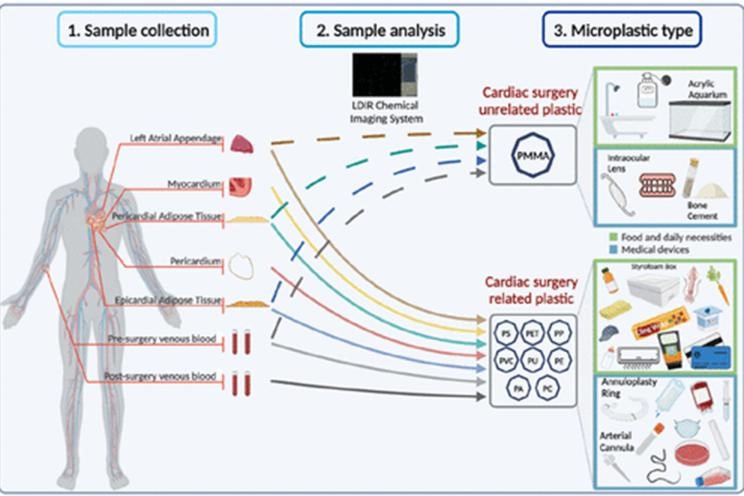No products in the basket.
Microplastics found in human hearts for first time
Posted onMicroplastics commonly found in food packaging and paints have been discovered in the human heart for the first time.
The alarming find was made by a team of scientists from Beijing Anzhen Hospital in China, who analyzed the heart tissue of 15 patients who underwent cardiovascular surgery, according to the study published by the American Chemical Society.
Microplastics, which are less than 5 millimeters wide — or about the size of a pencil eraser, can enter the human body through the mouth, nose and other body cavities.
Doctors Kun Hua, Xiubin Yang and their team wanted to investigate whether these particles can enter people’s cardiovascular systems through indirect and direct exposures, according to a statement about the study.
Researchers collected and analyzed the heart tissue of the patients as well as blood samples from half of the participants.
They “detected tens to thousands of individual microplastic pieces in most tissue samples” and found plastic samples in all of the blood samples.
Nine types of plastic were found in five types of heart tissue. The study also found evidence suggesting that some microplastics were inadvertently introduced to the subjects during the surgeries.
Plastics found in three different parts of the heart included poly(methyl methacrylate), a plastic commonly used as a shatter-resistant alternative to glass. These particles, researchers said, “’cannot be attributed to accidental exposure during surgery.

Polyethylene terephthalate, which is used in clothing and food containers, and polyvinyl chloride (PVC), which is widespread in window frames, drainage pipes, paint and more, were also found.
“The detection of in vivo MPs [microplastics] is alarming, and more studies are necessary to investigate how the MPs enter the cardiac tissues and the potential effects of MPs [microplastics] on long-term prognosis after cardiac surgery,” the research team concluded.
Last year, a study suggested that humans consume about 5 grams of small plastic particles every week, or roughly the weight of your credit card.
The plastic particles make their way into the human food chain from packaging waste, and enter the body through sea salt, seafood and even drinking water, scientists at the Medical University of Vienna found.
The changes in the gastrointestinal tract caused by the microplastic have been linked to metabolic diseases like obesity, diabetes and chronic liver disease.
Source: Newyorkpost




 Tiếng Việt
Tiếng Việt